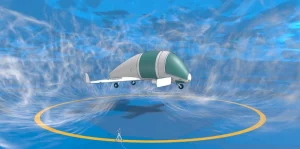- Directory
- Advanced Air Mobility White Papers
- Advanced Air Mobility (AAM)
- Special Condition for Small-Category VTOL-Capable Aircraft (Issue 2)
Special Condition for Small-Category VTOL-Capable Aircraft (Issue 2)
HotWhite Paper Details
Title
Special Condition for Small-Category VTOL-Capable Aircraft (Issue 2)
Year Published
2024
Author
European Union Aviation Safety Agency (EASA)
Number of pages:
30
PDF Download
This document establishes airworthiness standards for VTOL-capable aircraft in the small category (maximum take-off mass ≤ 5,700 kg, ≤9 passengers). It updates certification requirements to address safety, structural durability, fire protection, and operational limits, incorporating lessons from aviation incidents and harmonizing with FAA standards.
Key Updates in Issue 2
- Increased Maximum Certified Take-Off Mass (MCTOM):
- Raised from 3,175 kg to 5,700 kg to enhance payload, range, and battery capacity flexibility. Aligns with CS-23 aeroplane standards.
- Flight Recorder Alignment:
- Modified requirements for lightweight flight recorders (e.g., Eurocae ED-155) to match EU regulations (UAM.IDE.MVCA.191).
- EASA-FAA Harmonization:
- Unified wording for climb performance (VTOL.2105) and design principles (VTOL.2250) to ensure consistency in certification.
- Electrical Wiring Interconnection System (EWIS):
- New requirement (VTOL.2517) to mitigate risks from high-power electrical systems, inspired by incidents like TWA Flight 800 and Swissair Flight.
- Overwater Operations:
- Added categories for limited overwater operations and floating-surface operations, updating flotation and emergency exit standards (VTOL.2310, VTOL.2315).
- Structural Safety Enhancements:
- Revised durability (VTOL.2240) and fire protection (VTOL.2440) requirements to ensure consistent safety across subsystems.
Certification Categories
- Category Enhanced:
- Requires continued safe flight and landing for operations over congested areas or commercial passenger transport.
- Category Basic:
- Permits controlled emergency landing for non-commercial or non-congested area operations.
Critical Design Considerations
- Flight Control Systems Must prevent jamming and excessive friction and ensure smooth transitions between flight modes (VTOL.2135).
- Battery and Energy Systems: Require isolation, fire protection, and safeguards against energy loss during crashes (VTOL.2430).
- Occupant Protection: Mandates crashworthiness standards to prevent injury during emergency landings (VTOL.2270)
User reviews
There are no user reviews for this listing.
Already have an account? Log in now or Create an account
